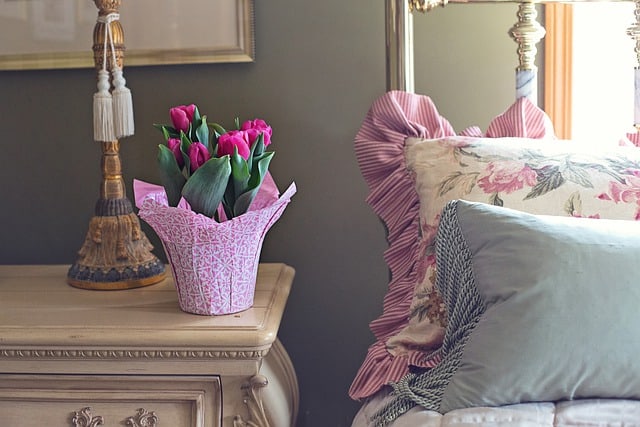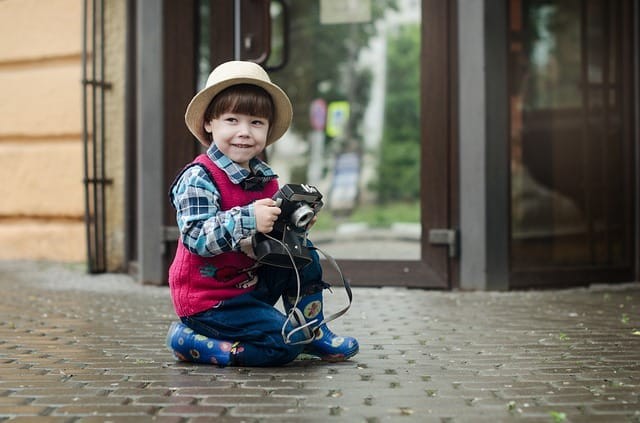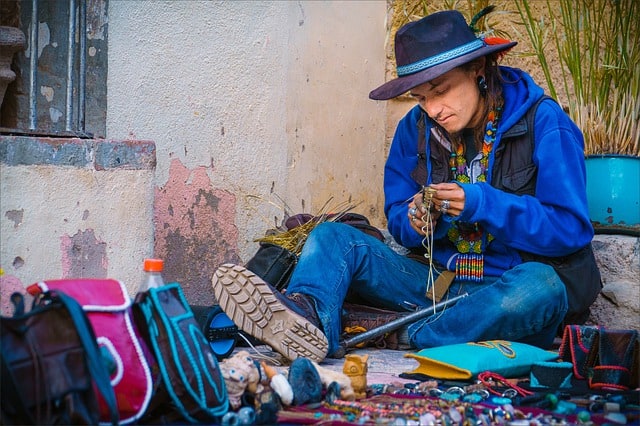If you’re a fan of the arts, Seattle is a fantastic city with many galleries to visit. Seattle’s galleries cover a wide span of artistic and creative silos. You’ll need several days to explore and discover gems.
Here’s a list of some of the best art galleries in Seattle and a brief overview of the types of art they specialize in.
Seattle Art Galleries
A/NT Gallery
A/NT Gallery presents two and three-dimensional works of art to the public. Many artists display their work for the first time at A/NT Gallery, making it a uniquely welcoming venue.
Opening times: Noon to 8pm Tuesday to Sunday
Address: 305 Harrison St, Seattle, WA 98109, USA.
G. Gibson Gallery
G. Gibson Gallery opened in the Pioneer Square neighborhood of Seattle in 1991. The Gallery exhibits contemporary painting, drawing + sculpture, with an emphasis on mid-20th century + contemporary photography.
Opening Times: 11:00am to 5:30pm Wed to Friday
Saturday 11:30am to 4pm
Address: 104 W Roy St, Seattle, WA 98119, USA
MadArt
MadAr supporta artists intheour community by bringing art into people’s lives in unexpected ways, and create community involvement in the arts.
Opening Times: Tuesday-Friday, 12-5pm
Address: 325 Westlake Ave N #101, Seattle, WA 98109, USA
Pottery Northwest
Founded in 1966, this non profit arts organization is a source of programming in the Seattle arts community.
Opening hours: 10am to 6pm Monday to Friday
Address: 226 1st Ave N, Seattle, WA 98109, USA
Winston Wachter Fine Art
Winston Wächter is a fine art gallery that provides art consulting for exhibition spaces in Seattle and New York City. The Gallery specializes in contemporary art.
Opening Times: Monday to Saturday, 10am to 5pm
Address: 203 Dexter Ave N, Seattle, WA 98109, USA
Belltown Art Galleries
Belltown Artwalk was re-established by Sassafras Boutique in early 2013. Since then, the Belltown Artwalk has operated consistently with artists showing work every second Friday of each month, year-round.
Opening Times: 6pm to 9pm Friday
Address: Seattle, Washington 98121
Common Area Maintenance
Standard AREA maintenance is a gallery and open format generative studio designed to offer collaborative work and exhibition space in Seattle’s Belltown neighborhood.
Opening Times: 24 hours Monday to Sunday
Address: 2125 2nd Ave, Seattle, WA 98121, USA
Form/Space Atelier
This Belltown space provides the infrastructure and curatorial support for artists who create site-specific installations. Find new media, experimental and contemporary art.
Opening Times: Wed – Sat: 12:00 PM – 4:00 PM
Address: 2407 1st Ave Seattle, Washington 98121
Gallery Mack
Gallery Mack represents the most exquisite contemporary art from regional artists. This gallery has been operating for more than 30 years. Artworks include glass, wood, painting and bronze. Their gallery is part of the Pike Place Foundation.
Opening Times: Monday-Saturday 10:30am-6:00pm
Sunday 11 to 5pm.
Address: 2100 Western Ave, Seattle, WA 98121, USA
Phylogeny Contemporary
Phylogeny Contemporary generates a creative dialogue between artists, Gallery and the public through solo and group shows of cutting-edge, forward-thinking art. Integral to the Gallery’s cultural program is its philanthropic community engagement.
Opening Times: Wed to Fri 11am to 5pm Sat 1pm to 5pm
Address: 2718 Elliott Ave, Seattle, WA 98121, USA
Seattle Glassblowing Studio
Seattle Glassblowing Studio is a creative studio where you can go to see glass art products in America. SGS represents works made with impressive glassmaking techniques.
Opening Times: Monday to Saturday 9am to 7pm Sunday 10am to 6pm
Address: 2227 5th Ave, Seattle, WA 98121, USA
Steinbrueck Native Gallery
Steinbrueck Native Gallery’s goal is to cultivate the awareness of the cultural traditions of First Nations in the Northwest Coast. The Gallery is a hub for artists and anyone who appreciates First Nations art.
Opening Times: Monday to Saturday 10am to 6pm
Address: 2030 Western Ave, Seattle, WA 98121, USA
A J Kollar Fine Paintings LLC
A.J. Kollar Fine Paintings, LLC specializes in American Paintings from 1840 to 1950. They source paintings and sculpture of aesthetic and historical significance. Gallery curators have advanced degrees in Art and Art History and work with private collectors and institutions.
Address: 1421 E Aloha St, Seattle, WA 98112, USA
Cloud Gallery
Cloud Gallery ascribes to forging a strong partnership between the artist and the public. The Gallery provides opportunities for emerging and mid-career artists to exhibit and experience responses to their work, and for the public to view contemporary art.
Address: 901 E Pike St, Seattle, WA 98122, USA
Kobo Shop & Gallery
KOBO which translates from Japanese as “artist’s workspace,” is an artisan gallery featuring Japanese and Northwest beautiful crafts. KOBO specializes in range of works, both traditional and contemporary. They display clay, fiber, metal, wood, textile, and paper.
Opening Times: Monday to Saturday 11am to 6pm/ Sunday 12pm to 6pm
Address: 602 S Jackson St, Seattle, WA 98104, USA
Pikes Place Marketplace Art Galleries
Pike Place Market is a unique community within the heart of Seattle’s downtown. More than the city’s beloved public market, Pike Place Market is a vibrant neighborhood comprised of hundreds of farmers,
Opening Times: Monday to Sunday 9am to 6pm
Address: 85 Pike St, Seattle, WA 98101, USA
Abmeyer + Wood
Abmeyer + Wood Fine Art ia specialist in contemporary painting and sculpture. The gallery is the place to go if you are interested in figurative ceramics and glass sculpture. There are monthly exhibitions and you will find them at art fairs. The gallery is across the street from the Seattle Art Museum.
Opening Times: Monday to Saturday 11am to 6pm
Address: 1210 2nd Ave, Seattle, WA 98101, USA
Art Stall Gallery
Established in 1965, Art Stall Gallery is a gallery owned by artists and it has a central location in Pike Place Market. A dedicated group of thirteen professional artists brings new and original works to the Seattle fine arts community each month.
Opening Times: Monday – Saturday 10:00am to 6:00pm
Address: 97 Pike Pl #2, Seattle, WA 98101, USA
Brooke Westlund Studio & Gallery
“Seattle artist Brooke Westlund taps into a deep collective spirit in her abstract mixed media creations. Her paintings embrace something individual and unique and simultaneously connects to the pulse of the collective whole.”
Address: 1514 Western Ave, Seattle, WA 98101, USA
Ed Newbold Wildlife Artist
Ed Newbold is a Wildlife Artist living n Seattle, with a store at the entrance of Pike Place Market. Ed paints in acrylic and also does gouache and his art is available as signed prints, signed posters, notecards and originals.
Opening Times: Monday to Sunday 8:30am to 6pm
Address: 93 Pike St, Seattle, WA 98101, USA
Harris Harvey Gallery
Harris Harvey Gallery is a leading Seattle fine art gallery where new and experienced collectors go to find paintings, prints, photography, and sculpture of the highest quality.
Opening Times: Tue to Sat 11am to 6pm
Address: 1915 1st Ave, Seattle, WA 98101, USA
Northwest Tribal Art
Northwest Tribal Art (Northwest American Native Arts) is one of the leading Gallery showcasing museum-quality Northwest Native and Inuit artwork for collectors since 1981.
Opening Times: Monday-Saturday: 10 a.m. to 6 p.m. Sunday: 11 a.m. to 4 p.m.
Address: 1417 1st Ave, Seattle, WA 98101, USA
Studio / Gallery Artist Jesse Link
Jesse Link is a Seattle based visual artist. Originally from the Pittsburgh area, Jesse graduated from the Art Institute of Pittsburgh with a degree in Industrial Design.
Opening Times: Thu to Sun 11am to 5pm.
Address: 1501 Pike Pl #324, Seattle, WA 98101, USA
Traver Gallery
Seattle-born painter and sculptor Traver Bennion has shown his work across the United States, Canada, and Europe since 1968. He lives on Vashon Island, near Seattle, Washington.
Opening Times: Tues to Sat 10am to 6pm
Address: 110 Union St #200, Seattle, WA 98101, USA
Vetri Gallery
Since 1996, Vetri has showcased artists and designers, especially of the studio glass movement. They focus on the innovative contemporary work in glass as well as ceramic artists, independent jewelry designers, and exceptional objects in all media.
Opening Times: Tues to Sat 10am to 6pm, Sunday 10am to 5pm
Address: 1404 1st Ave, Seattle, WA 98101, USA
Pioneer Square Area Art Galleries
A Gallery
Located in Seattle’s historic Occidental Park, A Gallery has dedicated its exhibitions to showcasing the work of new artists. Integrus Architecture receive proposals that address design, social spaces, and visual complements to real architectural practice.
Opening Times: Monday to Friday 9am to 5pm
Address: 117 S Main St, Seattle, WA 98104, USA
METHOD Gallery
The mission of METHOD is to foster and exhibit sculpture and installation that regards process, material, and concept, while engaging the gallery space.
Opening Times: Friday and Saturday 12-5pm
Address: 106 3rd Ave S, Seattle, WA 98104, USA
Shift Gallery
Shift is an artist-run gallery that opened in December 2004 in the renovated Tashiro-Kaplan arts complex; an artist lives/work building in the Pioneer Square district of Seattle.
Opening Times: Friday & Saturday 12pm – 5pm
Address: 312 S Washington St, Seattle, WA 98104, USA
SOIL
Founded in 1995, SOIL is a collective and a nonprofit gallery established, supported, and managed by Seattle artists. SOIL is an experimental venue for artists and curators to exhibit, develop, and advance innovative art of diverse media and content.
Opening Times: Thursday to Sunday 12pm to 5pm
Address: 112 3rd Ave S, Seattle, WA 98104, USA
Stonington Gallery
Stonington Gallery has an exciting collection of contemporary masterworks from the Pacific Northwest and Alaska. Since 1979, the Gallery has been showcasing a collection, exceptional service and knowledgeable staff. For visitors wishing to understand the character of Seattle and the wider Northwest Coast, our Gallery is a rich cultural introduction, and proof of the vibrant, living indigenous cultures of our region.
Opening Times: Weekdays 10am – 6pm (PST) / Saturday 10am – 5:30pm / Sunday 12pm – 5pm
Address: 125 S Jackson St, Seattle, WA 98104, USA
Treason Gallery
Treason Gallery is sought after by collectors and art enthusiasts across the world.
Opening Times: THURSDAY – SATURDAY 12-5 PM
Address: 319 3rd Ave S, Seattle, WA 98104, USA
ZINC contemporary
At ZINC, artists and creativity fuel inspiration, innovation and hope for humanity.
Opening Times: THURSDAY – SATURDAY 10am to 4pm
Address: 119 Prefontaine Pl S, Seattle, WA 98104, USA
Georgetown Art Galleries
(The) Alice
The Alice is a contemporary art space in the Georgetown neighborhood of Seattle. The Alice is run by a curatorial collective of seven artists and writers: Julia Freeman, Julia Heineccius, Bettina Judd, Natalie A. Martínez, Minh Nguyen, Thea Quiray Tagle, and Dan Paz.
Opening Times: 12-7PM on Saturdays
Address: 6007 12th Ave S, Seattle, WA 98108, USA
Bridge Productions
Bridge Productions examines, supports, and helps sustain arts ecosystems thorough examination of the current state and conditions; as well as the art, artists, and producers of ; contemporary art and its various environments.
Opening Times: no found
Address: no found
Georgetown Arts & Cultural Center
Georgetown Arts and Cultural Center, located in an eclectic neighborhood of Seattle, aims to “foster a supportive environment for local artists to create, perform, and be active in the local arts and cultural community. In addition to hosting rotating exhibits, the GACC takes part in the Georgetown Every Second Saturday Art Attack.
Opening Times: no found
Address: 5809 Airport Way S, Seattle, WA 98108, USA
Praxis Arts LLC
Their mission is to uphold inspiring space for art makers and educators, to strengthen the Seattle’s art community. Theoria is in the Art & Design District of Georgetown. The 1903 douglas fir ballroom offers a gorgeous up-scale antique platform to the artistic culture of Seattle.
Opening Times: no found
Address: 5511 1/2 Airport Way S, Seattle, WA 98108, USA
Studio e Gallery
Studio e is a contemporary art space focused on exploring new territories in creative expression through a program of exhibitions, talks and temporary in-situ projects.
Opening Times: thursday, friday & saturday 1-6pm*
Address: 609 S Brandon St, Seattle, WA 98108, USA
Seattle Art Museums
(The) Art Institute of Seattle Gallery
The Arts Institutes International is now providing transcript services for the closed Ai Campuses.
Opening Times: no found
Address: 2323 Elliott Ave, Seattle, WA 98121, USA
Chihuly Garden and Glass
Dale Chihuly was introduced to glass while studying interior design at the University of Washington.
Opening Times: Mon to Thurs 8:30am to 8:30pm / Friday to Sunday 8:30am to 9:30pm
Address: 305 Harrison St, Seattle, WA 98109, USA
Frye Art Museum
The Frye Art Museum is a catalyst for engagement with contemporary art and artists.
Opening Times: 11–5, Tuesday–Sunday 11–7, Thursday Closed Monday
Address: 704 Terry Avenue Seattle, Washington 98104 USA
M. Rosetta Hunter Art Gallery
The mission of M. Rosetta Hunter Art Gallery is to provide a venue for the Seattle Central community to experience the visual arts. The Gallery emphasizes the display of student works, and complements these with shows by local and regional artists.
Opening Times: 9:00 a.m. to 3:00 p.m. (TWTh)
Address: Seattle, WA 98122, USA
Olympic Sculpture Park
This award-winning sculpture park on the waterfront is Seattle’s largest downtown green space.
Address: 2901 Western Ave, Seattle, WA 98121, USA
Seattle Art Museum
Located downtown, one block from Pike Place Market, global art collections, temporary installations, and special exhibitions from around the world bridge cultures and centuries.
The Seattle Art Museum acknowledges that we are located on the ancestral land of the Coast Salish people.
Opening Times: Monday 10am–5pm, Wednesday 10am–5pm, Thursday 10am–9pm, Friday to Sunday 10am–5pm
Address: 1300 1st Ave, Seattle, WA 98101, USA
Wing Luke Museum
Wing Luke Museum believes that stories have the power to change the world and that our roots and the Asian Pacific American perspective matter. When you go on a tour, you’ll experience more than absorbing facts and history. Our Education Guides bring with them their narratives and passions, making each visit unique.
Opening Times: Tuesday to Sunday 10am to 5pm
Address: 719 S King St, Seattle, WA 98104, USA















